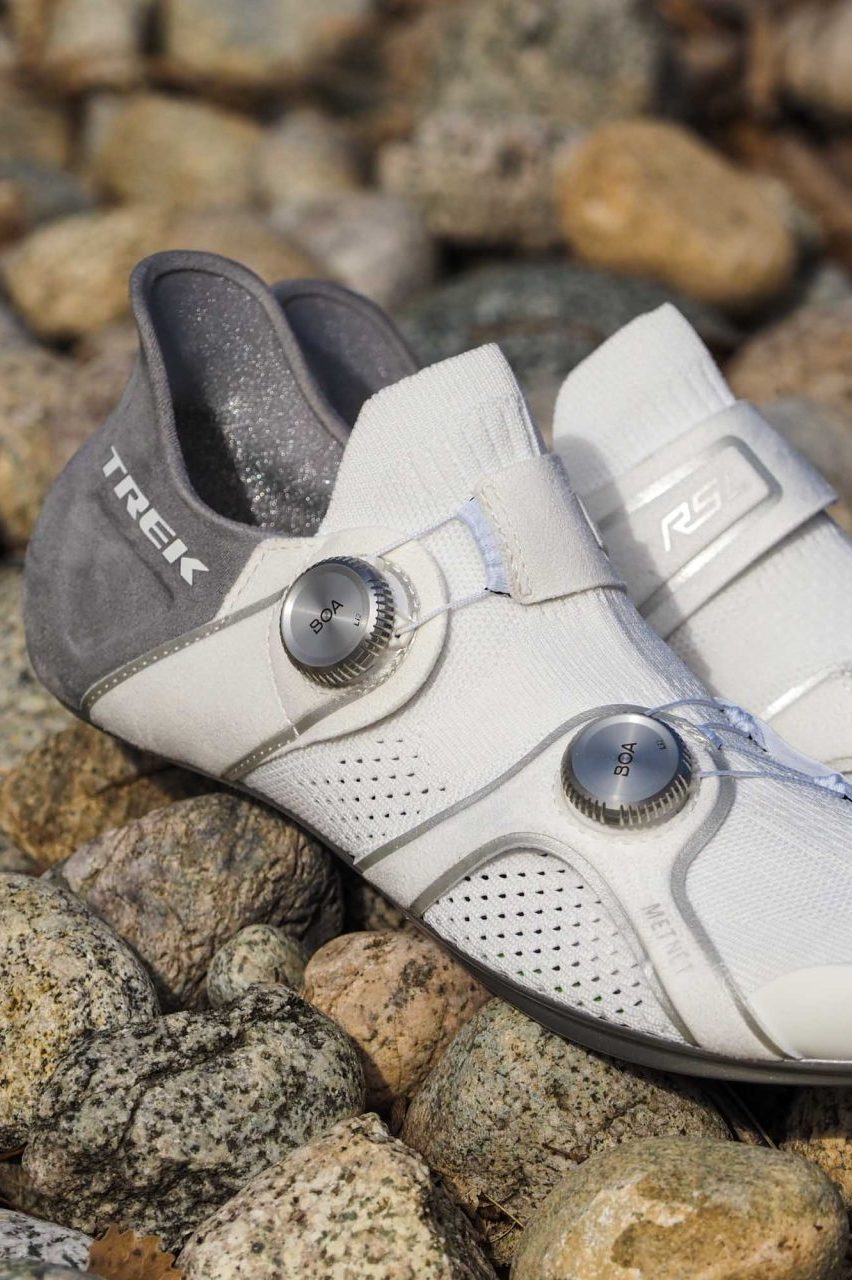The new Trek (yes, Trek, not Bontrager) RSL Knit road shoes are frighteningly expensive, just about impossible to keep clean, a bear to get on and off, and the sizing is a little weird. Some might even say the same about how they look.
But they might also be the comfiest high-performance road shoes I’ve ever worn.
Knit or not
Cycling shoes with knit uppers have been around for a few years now, and while the technology was initially presented as some sort of revolution in the footwear world, to date it’s mostly felt more of a novelty – or even just a way to achieve a different aesthetic. While there’s always been enormous potential for knit uppers in terms of things like materials and differential stretch/support patterns, most knit cycling shoes I’ve tried up to now ultimately haven’t really been all that different from more conventional cycling shoes made with the usual microfibers or synthetic leathers.
Trek’s new RSL Knit road shoes take a decidedly different tack.
Instead of relying on the knit material to provide both stretch and support together in one, the RSL Knit uses it almost exclusively for the former. For support, there’s a wraparound heel cup and an entirely separate external skeleton – with two machined aluminum Boa Li2 cable-type closures – to lock everything down.
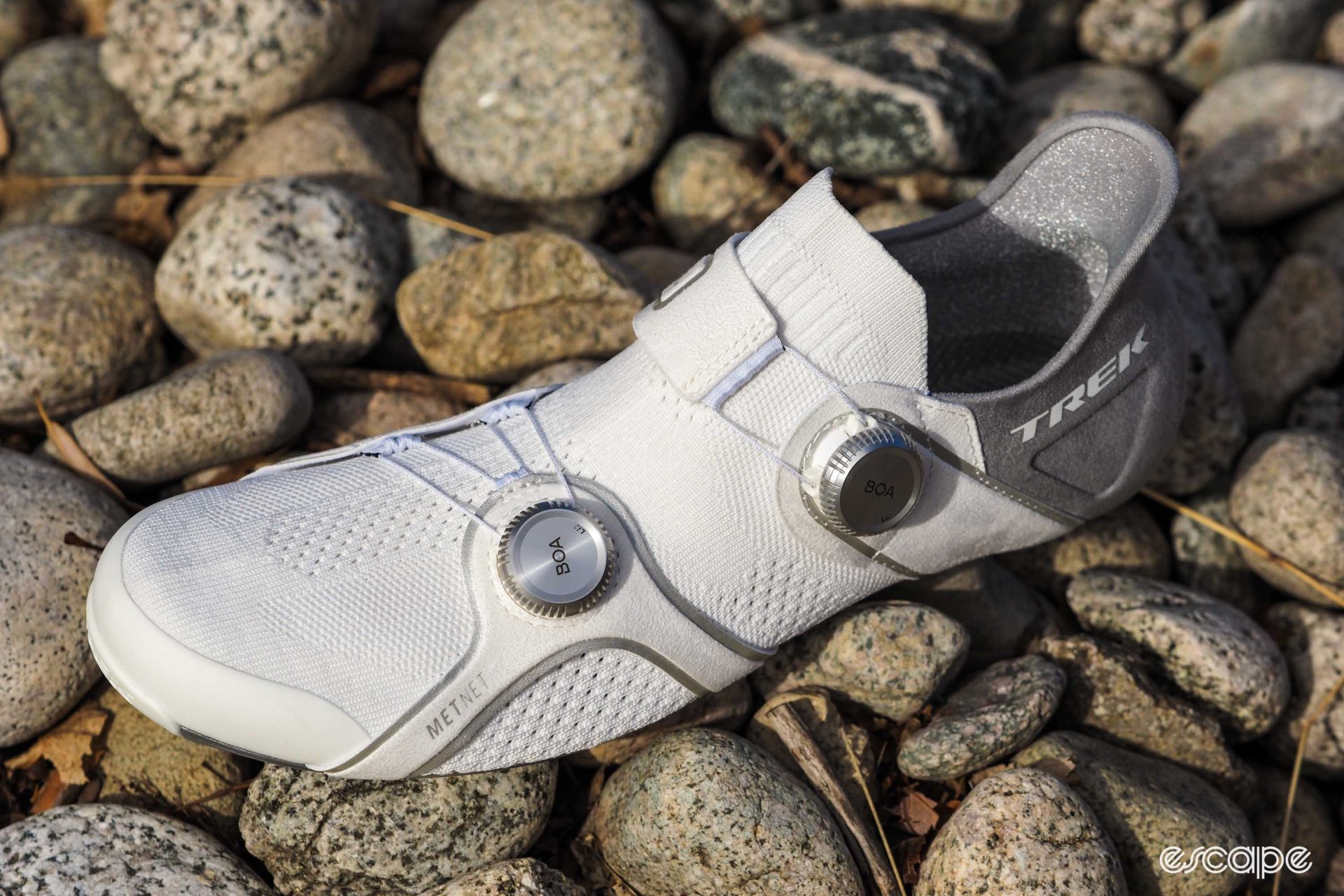
In some ways, the idea of the RSL Knit isn’t all that different from the S-Works Ares shoes that Specialized introduced a couple of years ago, which also feature a stretch sock-like upper with a separate support network. In the RSL Knit, though, those two components are even more deconstructed from each other.
Whereas the straps on the Ares are a bit more integrated into the upper as a whole, the ones on the RSL Knit aren’t connected to the upper at all. Instead, they’re anchored only at the carbon plate and then wrap around the top. And while the Ares was meant more as a sprinter’s shoe with efficient power transfer as the ultimate goal, Trek seems to have gone down the more minimal route with the RSL Knit, placing a higher priority on low weight and comfort while still providing the necessary support.
The forefoot area, for example, features a sort of Y-shaped yoke on both the medial and lateral sides, leaving your metatarsal heads completely free to poke out through the stretch knit material as needed (a feature Trek called “MetNet”). Out back, the single main strap wraps around just in front of your ankle and works with the usually deep heel cup and no-slip liner to prevent any excessive movement in that critical area without requiring you to really crank down on the Boa dial.

Down below is a liberally ventilated carbon fiber plate with a conventional three-bolt cleat pattern and minimalist TPU heel and toe tread.
Trek is offering the RSL Knit in two colors – a striking black-and-gold combo as well as an all-white setup if you never ride in the wet – in sizes 36-48 with half sizes from 38-46 (sort of, anyway – more on that in a bit). Retail price is a rather heady US$500 / AU$750 / £400 / €450, and claimed weight is 488 g for a pair of size 42s (my size 43s came in at 505 g).
Like Tevas and socks – and I mean that in a good way
To describe wearing the RSL Knit as being unlike just about any other shoe on the market would be quite the understatement. That is, unless you’ve worn Teva sandals with socks before because the RSL Knits seem to me to be a lot like that oft-maligned combo, at least in concept.
The knit portion of the RSL Knit is much tighter than you’d expect: stretchy, yes, but also highly elastic. The feel is incredibly even, with seemingly just the right amount of snugness. The oft-used cliché, “sock-like fit”, actually applies here because what’s on your foot is basically a super-fancy sock.
It’s once you you tighten down the Boa dials that the magic happens.

Because the knit portion does such a good job of cradling your foot, the straps don’t need to be super tight to provide the necessary structure for pedaling. The heel cup does the lion’s share of the work in keeping your foot from sliding around when applying power, while the straps seem mostly there just to keep your foot from pulling away from the plate. In fact, fellow Escape Collective tech editor Ronan Mc Laughlin noted there was an almost “on-off” feeling to the straps, almost as if they could have used a bit more stretch to their microfiber material.
Maybe that Teva-and-socks combo isn’t so silly after all.
What’s of particular interest is how well the RSL Knit adapts to different feet.
The knit upper is so stretchy and accommodating that as long as you’ve got the length right, seemingly any width/volume/shape otherwise will work just fine. After all, when was the last time you saw socks made specifically for wide or narrow feet? The external straps are highly resistant to stretch but also remarkably flexible, and the Y-shaped yokes around the forefoot genuinely do an excellent job of relieving pressure on the first and fifth metatarsal heads even when they’re cranked down tight. As icing on the cake, the toebox is decently tall and more squared-off than most so there’s plenty of room for your little piggies to wiggle about.
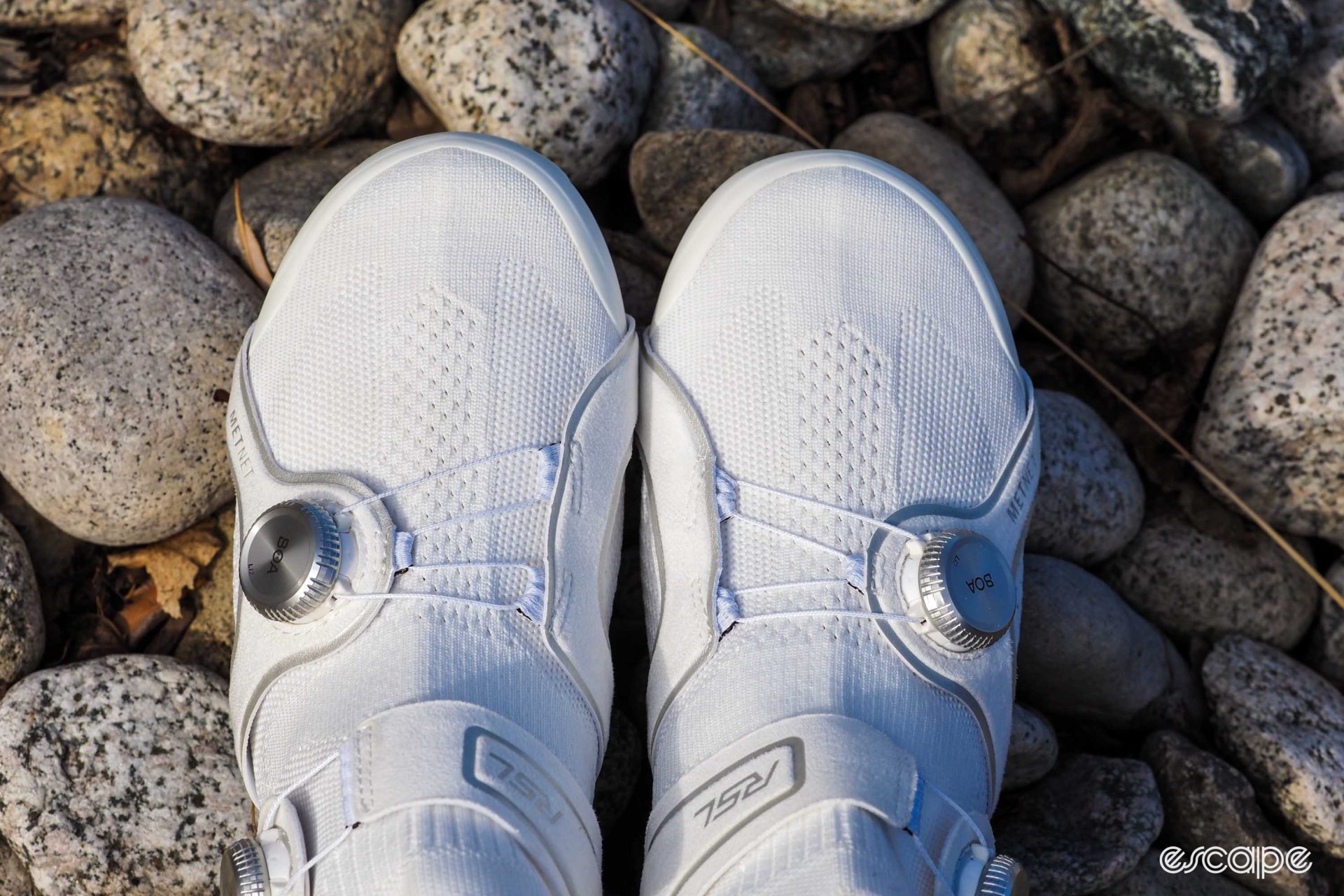
I’ve got classic Asian feet: rather flat, wide, and with a low instep – not all that different from a duck, to be perfectly honest – as well as Tailor’s bunions on the lateral side of both feet. In contrast, Ronan has a much higher arch and a taller instep. Regardless, we both found the RSL Knit to be supremely comfy.
“[These seem] made for my feet – like, I suspect better than custom,” Ronan said. “I’ve a pretty tall navicular bone and most shoes press on it to some degree. With the knits being just like a sock and no strap or upper in this area, there is no pressing.”
That comfort doesn’t come as the expense of performance, either. Despite the straps not needing to be super tight, the hold is impressively secure through the heel and midfoot areas, and power transfer feels plenty efficient through that stiff carbon plate. That heel cup has the potential to be polarizing – it seems to either fit your foot or it doesn’t – but together with that main strap, it offers a rock-solid fit when on the bike. Likewise, that forefoot strap does a superb job of keeping that area of your foot from moving around excessively.
As you’d perhaps expect from such a design, ventilation is truly fantastic, almost to the point where you don’t feel like you’re wearing a shoe at all. Got issues with your feet getting hot? Consider your wishes granted. But on the flipside, it doesn’t take much of a dip in mercury for your feet to feel uncomfortably cold, as I discovered one cloudy day with ambient temperatures hovering around 7°C (45°F). Definitely don’t forget your booties then.
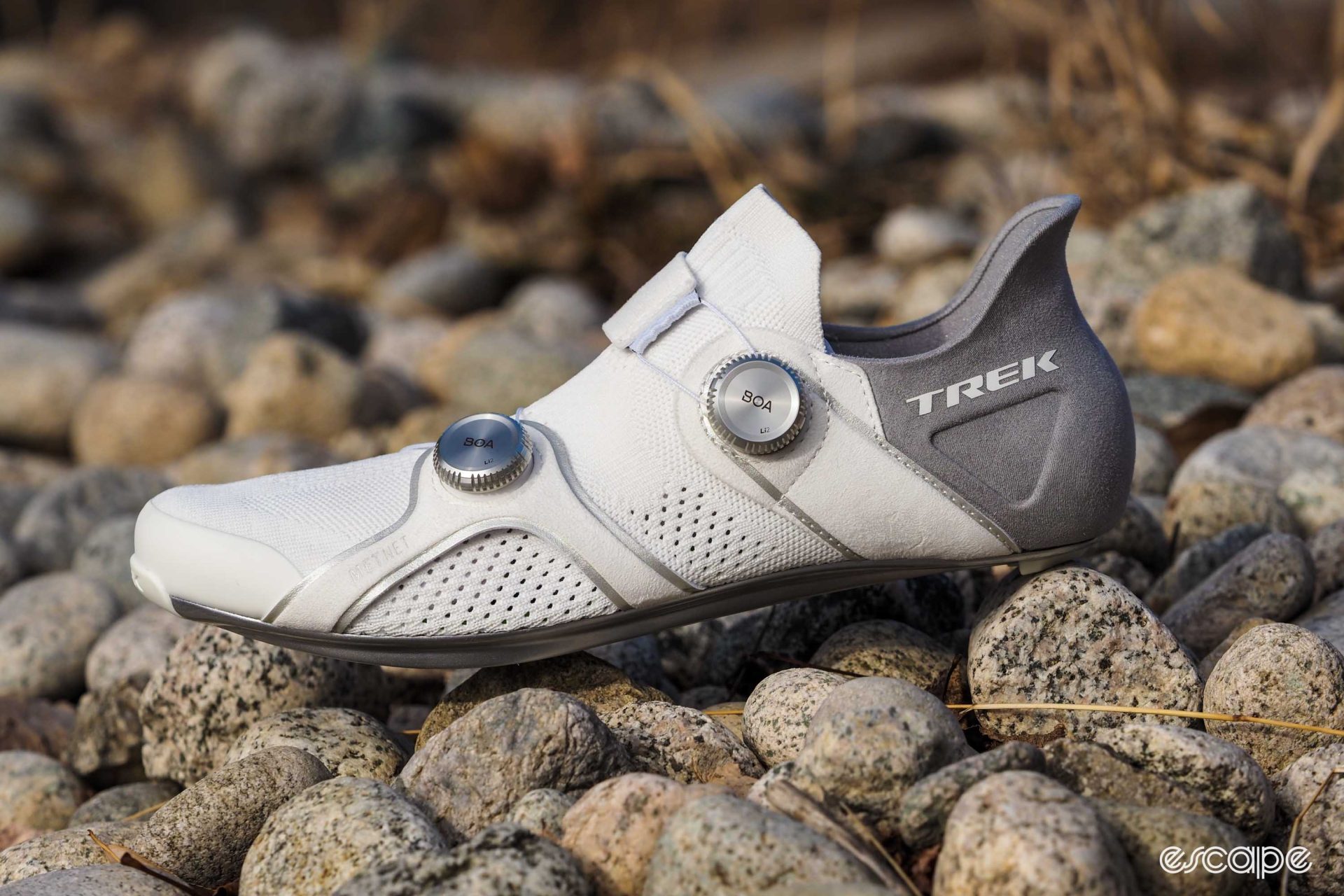
While neither Ronan nor I could find much that bothered us with the RSL Knit, there are definitely some quirks and curiosities worth mentioning.
The hold may be impressively secure, but the RSL Knit is almost too minimal in how it gets there. Riders that prefer a more substantial-feeling shoe might find these to feel a little too different, like something is missing. You’re unquestionably locked in, but there’s still less structure than usual, and not everyone is going to like that feeling. To put it in simpler terms, I supposed if the Ares is a sprinter’s shoe, the RSL Knit strikes me more as one for climbers. And yet despite that minimalist feel, the upper design makes the RSL Knit unquestionably one of the hardest cycling shoes to get on your foot. Front and rear pull tabs would certainly help, but in lieu of that, be sure to keep a shoehorn handy.
Another area where Trek may have gone a little too lean is the insole. Trek makes a big deal of how the RSL Knit’s new “bio-based” foam footbeds, which are supposedly less resource-intensive than the more common EVA foams. However, they’re so flimsy that both Ronan and I thought on our initial rides that the cleat bolts were poking up into the interior of the shoe. Those footbeds also don’t provide as much arch support as I’d prefer, but both of those issues are thankfully easy to fix with aftermarket options.
Got a thing for sparkly white cycling shoes? Sorry, but the white RSL Knits are – big surprise – virtually impossible to keep clean (maybe a spray-on DWR coating would help?). The rather firm tread materials are also pretty slippery when walking on harder surface (and the heel pad isn’t replaceable).

A much bigger knock, however, is the sizing availability.
One of the absolute key elements for any high-performance cycling shoe is the quality of fit, and in terms of design, the RSL Knit seems to have that aspect totally nailed. But Trek has quite inexplicably limited the EU market to whole sizes only – as in, nope, no half sizes at all. And in case you thought you were in the clear, keep in mind that both Ronan and I (and most of the Lidl-Trek team, apparently) found these to run about a half-size big, so there’s a very good chance you’ll need to go down about half a size from what you normally wear. For example, I normally wear a 43 and Ronan a 45, but while I would still be able to get the 42.5 that ultimately fit me better here in the United States, Ronan would be out of luck if he had to go through normal channels instead of Trek’s media and PR department.
Total head-scratcher of a decision there, Trek.
An old idea resurfaces
Roughly thirty years ago, Nike introduced a cycling shoe called the System Ultra that was genuinely unlike anything else out there at the time. It was built with a super stretchy and sock-like upper that was augmented by three external straps (one around the heel!) to provide structure and support. Sounds familiar, eh?
Nike didn’t quite get the execution right – they were too flimsy with insufficient support and required a special cleat for the proprietary flat mounting interface – but for two or three years, I was sure I had the comfiest feet of any cyclist out there.
Three decades later, it’s hard for me to look at these new Trek RSL Knits and not be reminded of those old Nikes. Only now, I no longer have to think, “What could have been?”, but rather, “Better late than never.”
More information can be found at www.trekbikes.com.
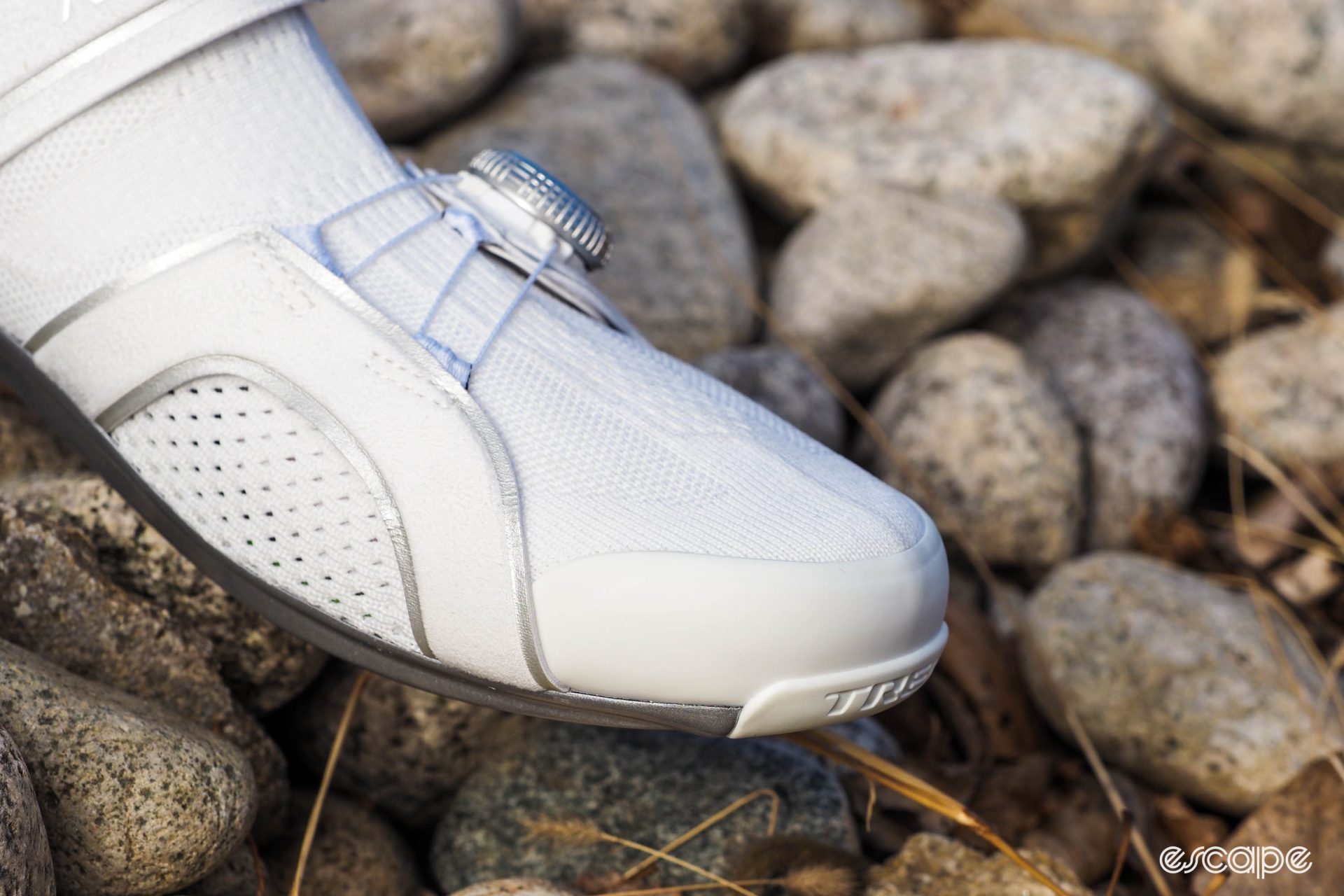
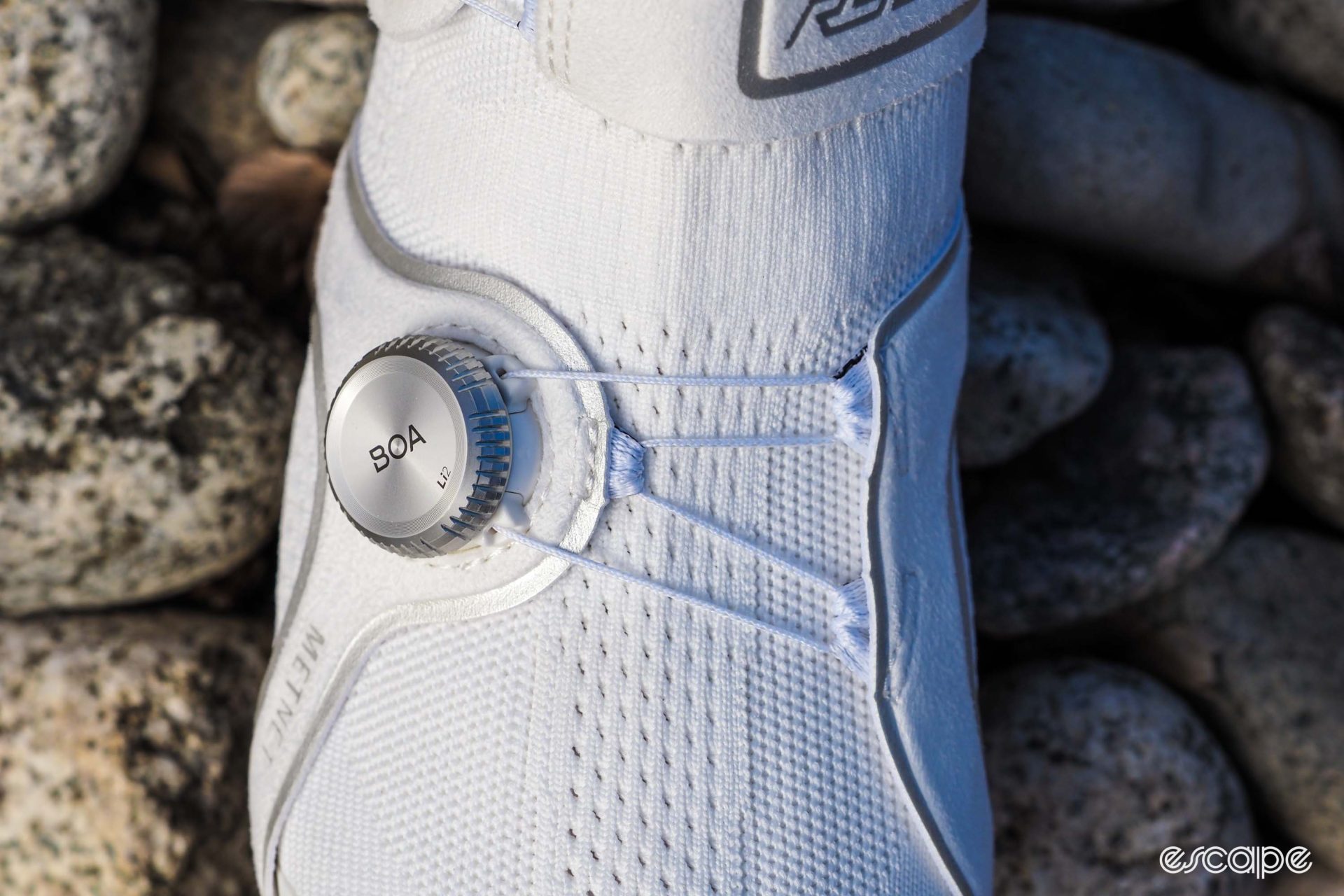
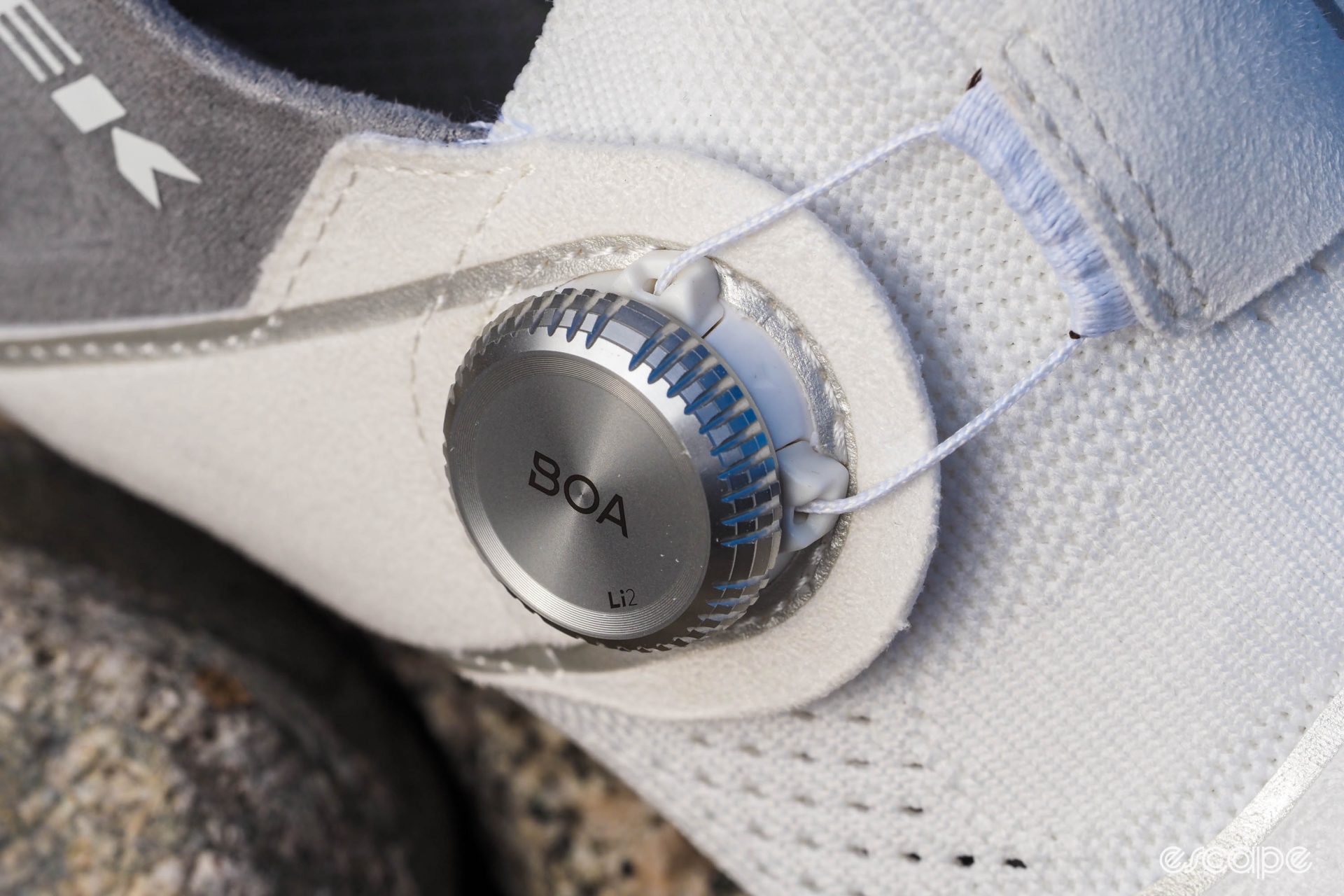


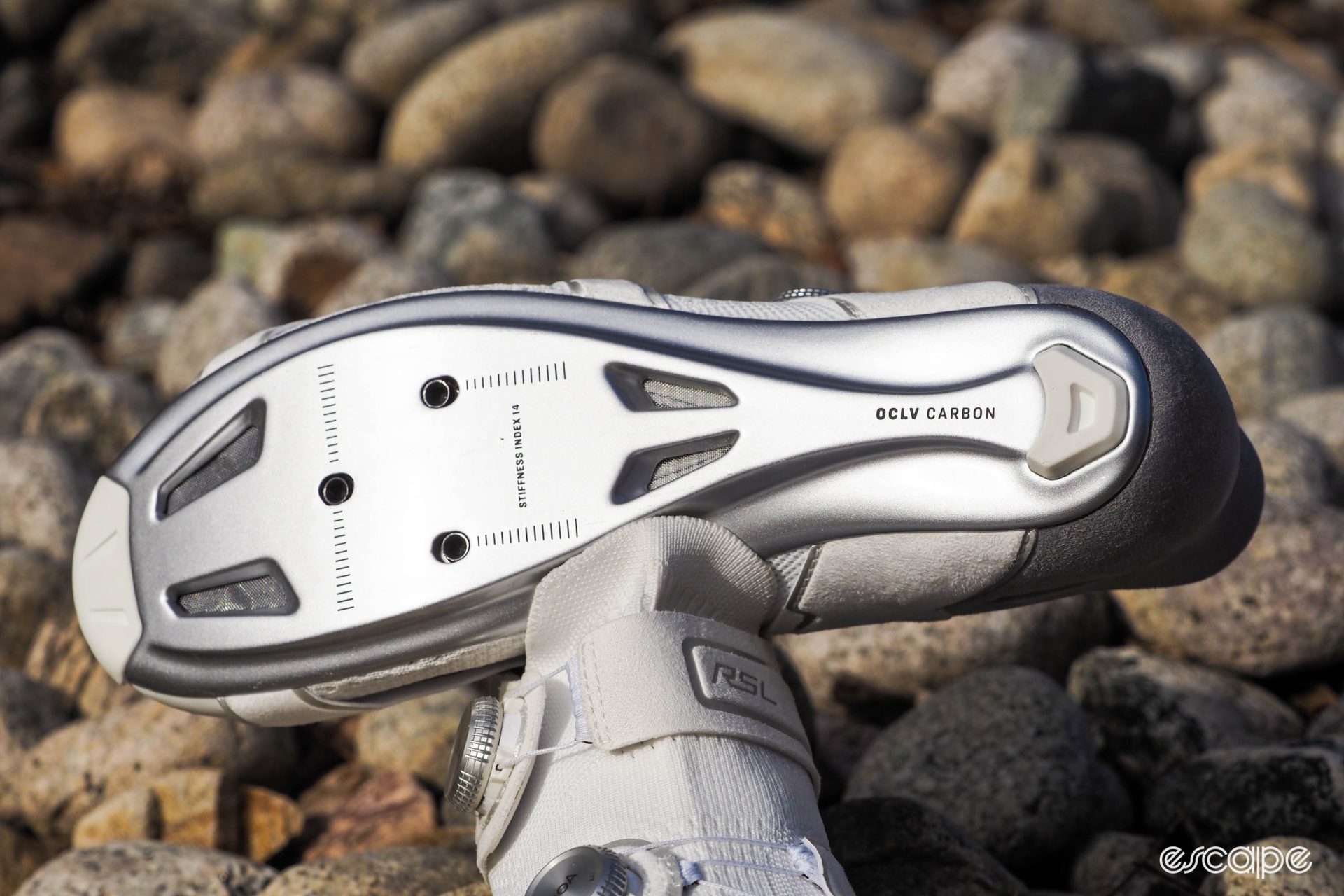
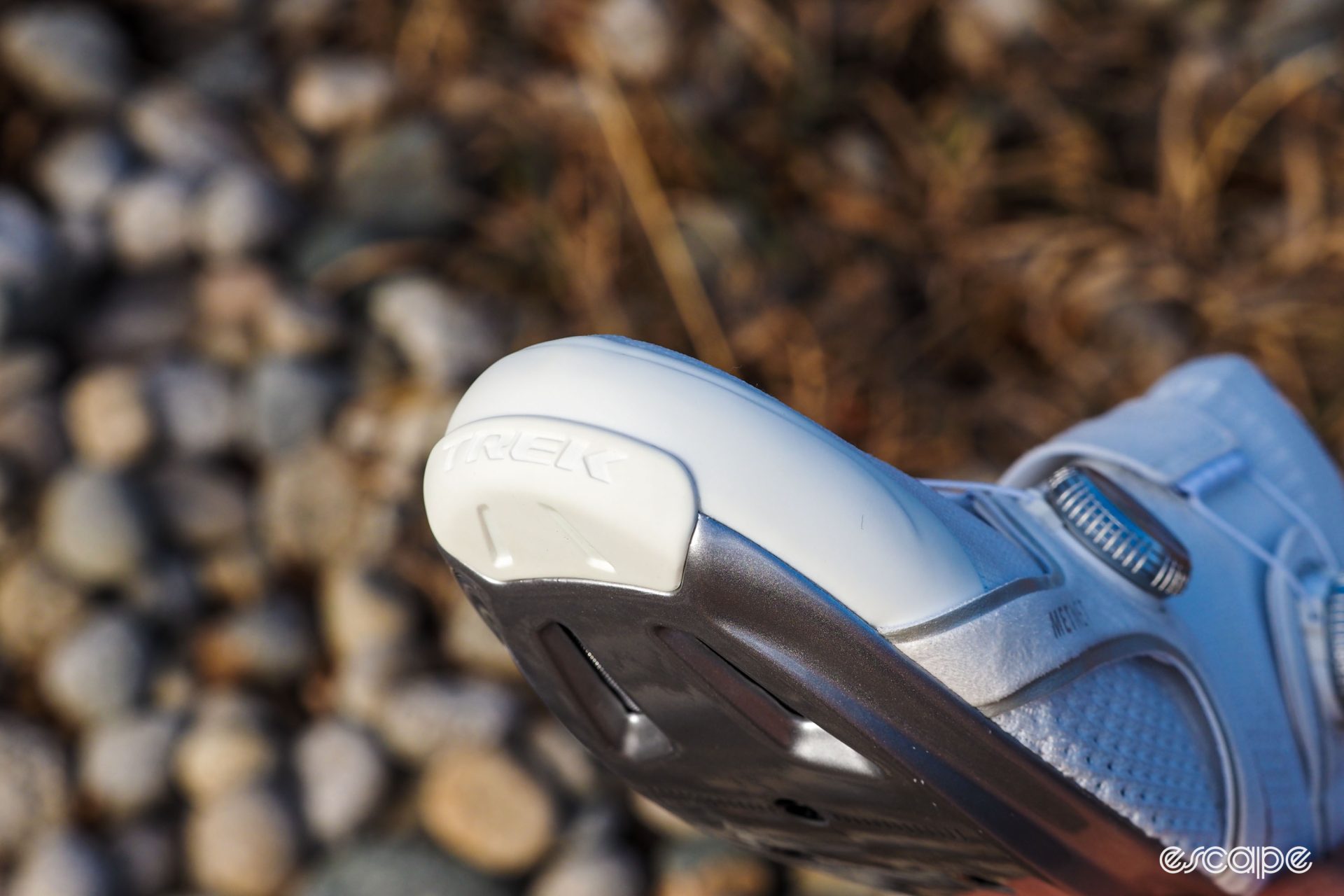


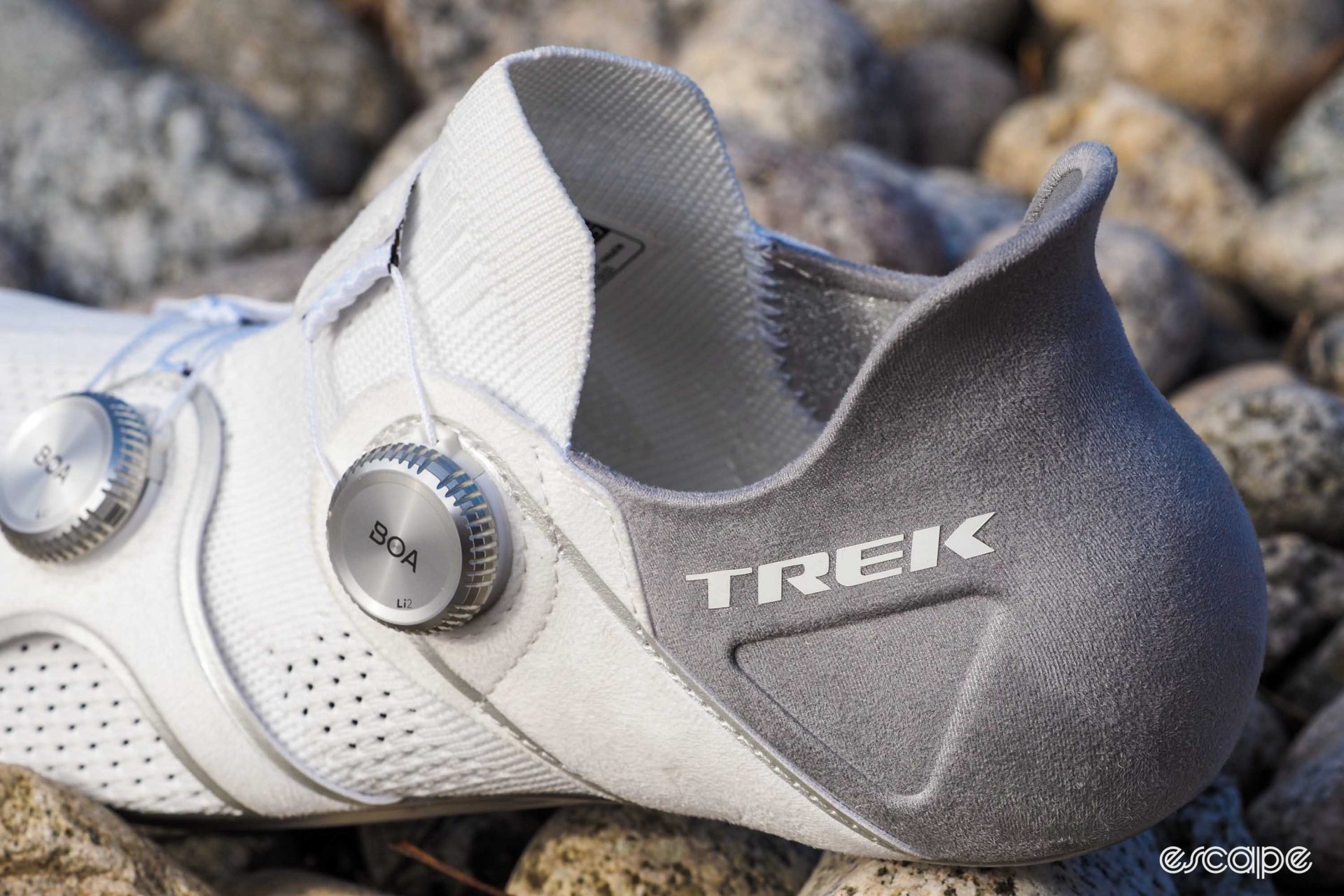

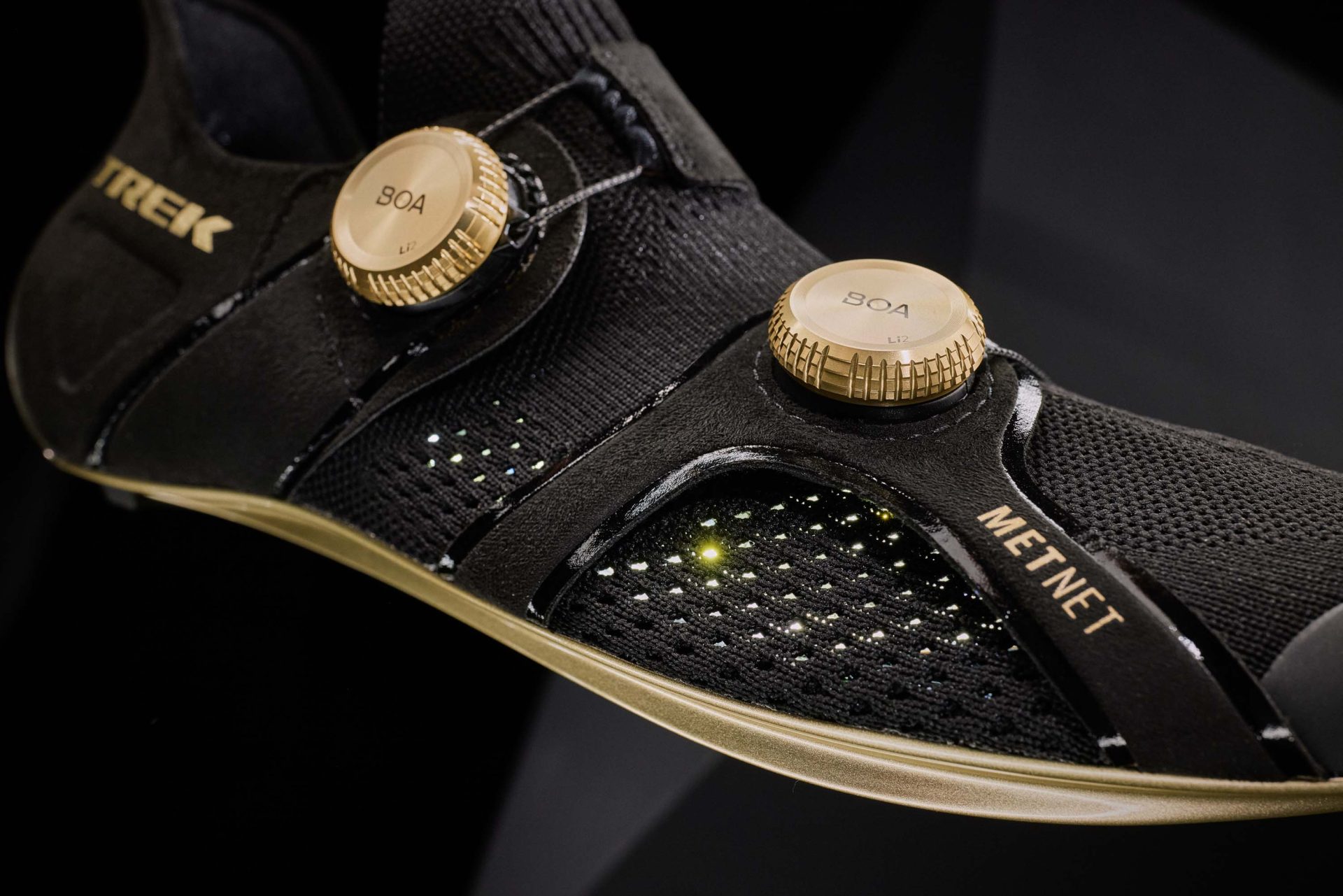
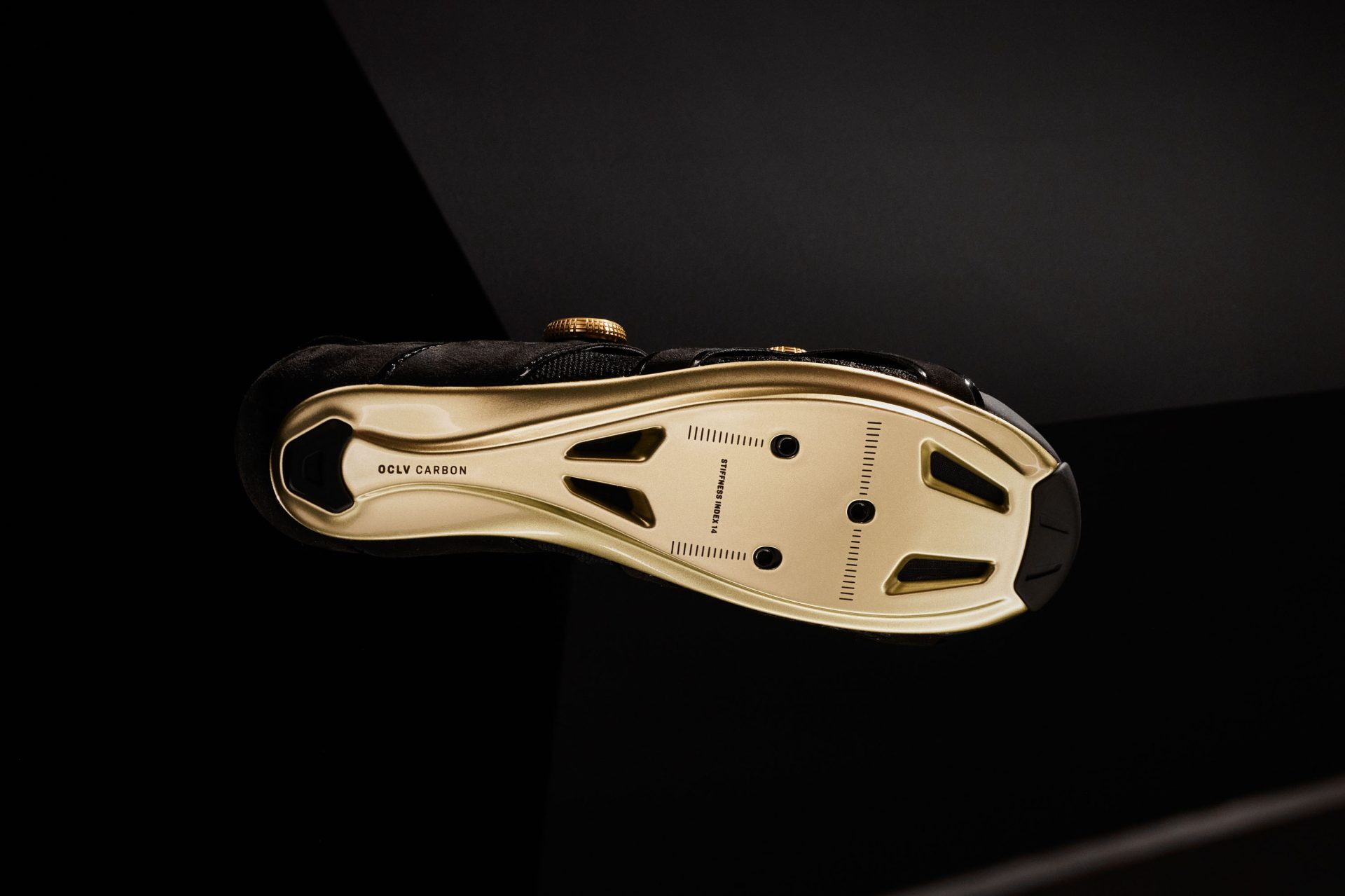
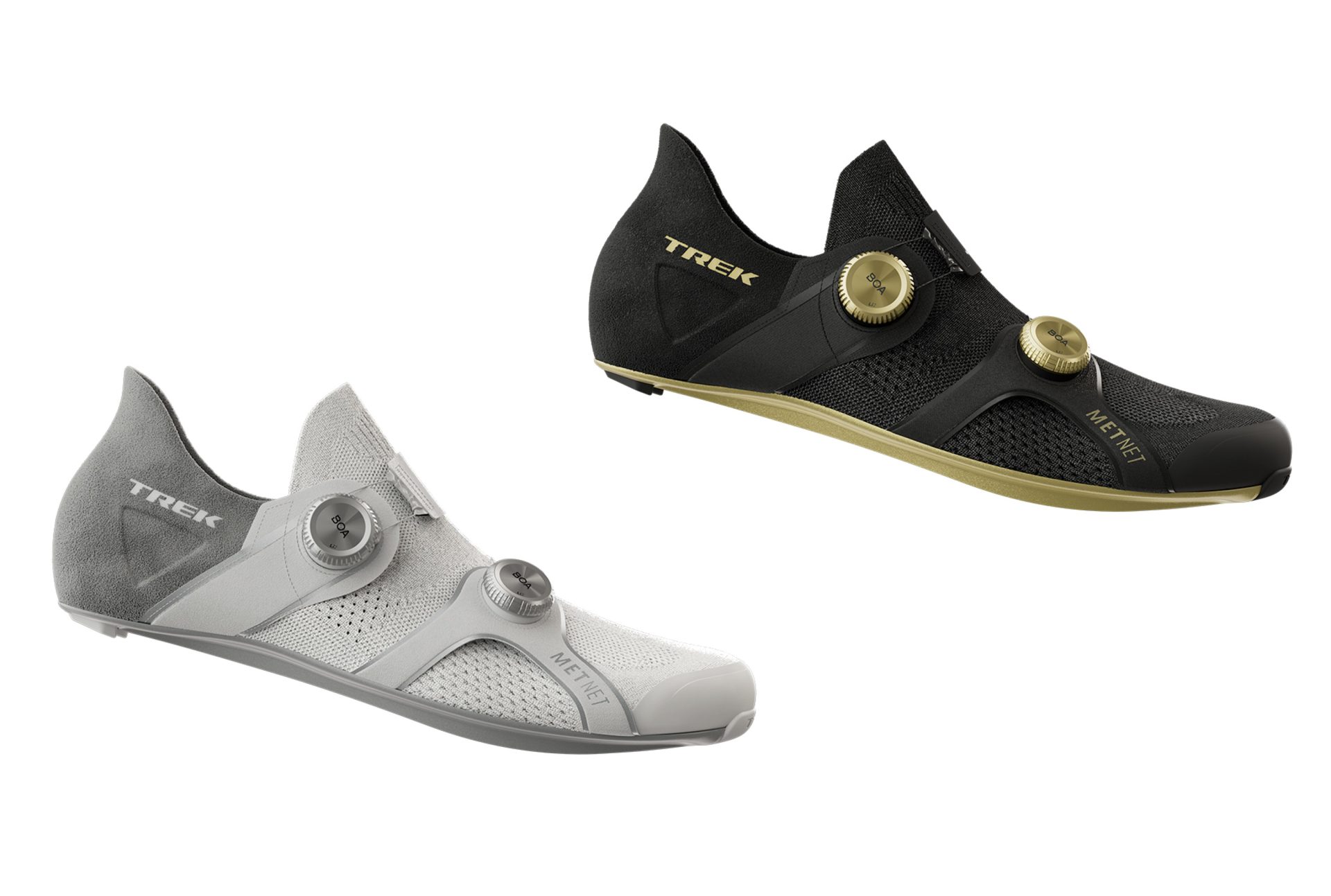
What did you think of this story?

